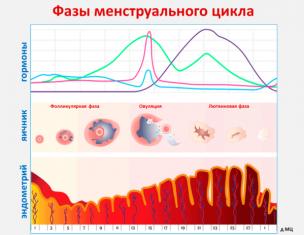Gross domestic product (GDP for short) is the main macroeconomic indicator. It is by him that they judge the development of the country, its impact on the world economy and investment attractiveness. Gross domestic product shows the size of the national economy, and its structure - the ratio of industries and their productivity. That is why it is so important to understand the methods of calculating GDP. We will consider the three main ones.
The term and its definition
Before we move on to what methods of calculating GDP exist, it is logical to dwell on what this indicator is. Gross domestic product is an aggregate measure of production equal to the sum of value added created by all residents and institutional units engaged in economic activity (plus taxes and minus subsidies). This definition is given by the Organization for Economic Cooperation and Development (OECD for short). It unites developed countries with representative democracy and a free market type of management. Initially, it was created as part of the Marshall Plan to coordinate various US projects for the post-war reconstruction of Europe.
General information
Methods for calculating GDP are usually used to assess the economic productivity of an entire country or a particular region. It can also be used to measure the relative contribution to the national economy of the industry in question. This is possible because the sum of all value added is GDP. The indicator calculation formula is not based on sales. It takes into account the difference between the cost of factors of production and finished products. For example, a firm buys steel and manufactures a car. If the methods for calculating GDP were based on market prices, double counting would occur. Since gross domestic product is the sum of value added, it also increases when a business reduces the consumption of materials and other inputs (called intermediate consumption) while continuing to produce the same output.
The most common use of GDP is to calculate the growth of an economy from year to year (and more recently quarterly). The Gross Domestic Product chart shows the successes and failures of the national government's course. Moreover, it can always be used to tell at what stage of the cycle the economy is: growth, peak, recession, depression.

Methods for determining
GDP can be determined in three ways. Each of them should give the same result. Allocate a production method for calculating GDP (value added), income and expenditure. The simplest is the first way. It follows logically from the definition. But its use is associated with data collection problems, which we will discuss later. The calculation of GDP by expenditure is based on the fact that all products produced must be bought by someone. This means that the amount of value added should be equal to the costs of the subjects. The calculation of GDP by income works on the principle that each factor contributes to the creation of finished goods. Net imports should also be taken into account. Therefore, GDP should be equal to the sum of the incomes of all producers.

By value added
The second name of this method is the production method for calculating GDP. This approach mirrors the OECD definition of the term. Since the sum of value added created by all residents and institutional units within a country is GDP, the calculation formula is as follows: the difference between the total value of output and intermediate consumption. To measure gross domestic product, all economic activity is classified into different sectors. After that, the performance of each of them is evaluated using one of the methods:
- Multiplying the output in each of the sectors by the market prices in it and adding the results.
- Collection of statistics on aggregate sales and stocks from the balance sheets of enterprises and their summation.
Subtracting intermediate consumption gives GDP at factor cost. In this case, each sector must be taken into account. Value added plus taxes and minus subsidies is GDP at producer prices.

Calculation of GDP by expenditure
In the economy, most things are produced for sale. Therefore, the amount of money spent on the purchase of goods and services can serve as an estimate of GDP. The formula in this case includes the following components:
- Consumption.
- Investment.
- Government spending.
- Export.
- Import.
GDP is equal to the sum of the first four components minus the last. An alternative formula includes final consumption expenditure, gross fixed capital formation and net exports.
Calculation of GDP by income
The number that is obtained using this method must be equal to the previous ones. However, in practice, statistical errors often occur, leading to minor differences. Income is divided into five categories:
- Salaries, additional labor money.
- corporate income.
- Interest and return on investment.
- Farmer's income.
- Profit from an unincorporated business.
GDP is equal to the sum of these five categories minus depreciation.

Historical reference
William Petty came up with the basic concept of GDP in order to protect landowners from dishonest taxation during the Anglo-Dutch Wars of 1652-1674. The method was developed by the mercantilist Charles Davenant. The modern concept of gross domestic product was first developed by Simon Kuznets to report to the US Congress in 1934. An American economist of Ukrainian origin and a Nobel laureate already then warned about the problems of using this indicator to measure well-being.
However, after the Bretton Woods Conference in 1944, GDP became the main means of evaluating the economies of states. At that time, the more common measure was the gross national product (abbreviated as GNP). Its main difference from GDP is that it measures the production not of enterprises and resident individuals, but of citizens and national firms, regardless of where they operate. The ubiquity of gross domestic product began in the 1980s. British economist Angus Maddison, a specialist in quantitative macroeconomic history, calculated the GDP of countries up to 1830.

Real and nominal indicators
Both market prices and basic prices can be used to calculate GDP. The nominal gross domestic product is the value of final goods and services produced in the territory of the state. As a result, it depends on inflation. Its presence leads to an inevitable increase in the indicator. Deflation, on the contrary, causes a decrease in GDP. The calculation of real GDP assumes that only real growth in production is taken into account. It can be expressed both in the prices of the previous year, and in any other year that you decide to take as a basis. The ratio of nominal and real GDP is called the deflator.

Data collection issues
The calculation of GDP indicators is carried out on the basis of statistical information for the country. If the added value created by firms is easy enough to take into account, then with the public sector, financial industries that deal with the production of intangible assets, everything is much more difficult. Nevertheless, it is the activity of these sectors that plays a significant role in the national economy of developed countries. International conventions that govern organizations and statistical offices must be constantly changed in order for the calculation of GDP to keep pace with the times. The gross domestic product indicator is the result of an analysis of extensive statistical data that is built into the conceptual framework of the measurement.









